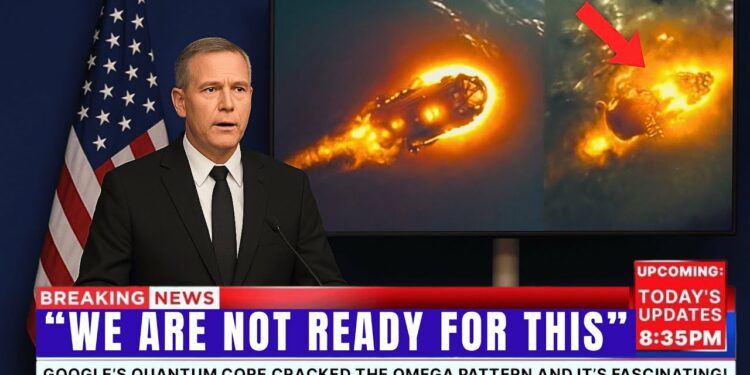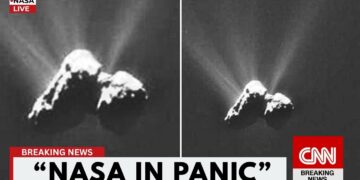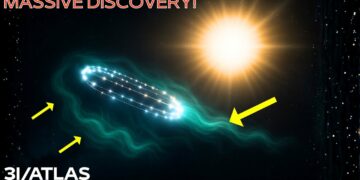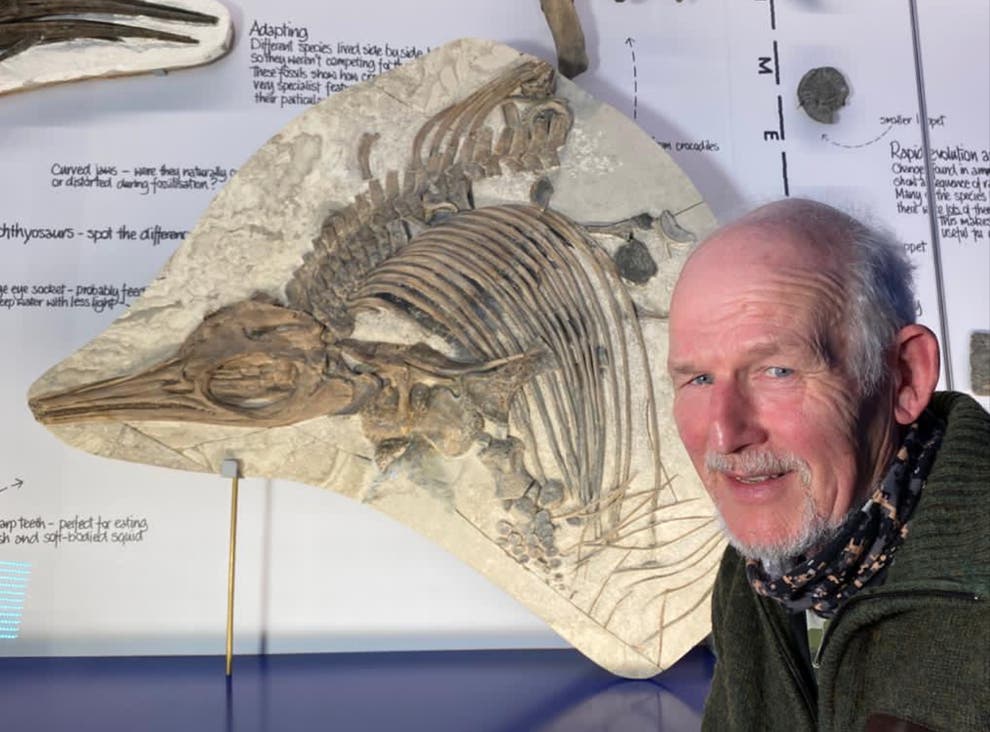On July 1, 2025, the ATLAS survey in Chile detected 3I/Atlas, the third confirmed interstellar object to enter our solar system, hurtling at 130,000 mph (58 km/s). With an eccentricity over 6, its near-straight trajectory set a record for interstellar visitors. But what stunned astronomers was its plume, pointing sunward—directly against the expected behavior of comet dust driven by solar wind. NASA’s data, backed by Hubble, Gemini South, and the Lowell Discovery Telescope, confirmed this anomaly: a bright, persistent, “blobby” plume defying physics by pushing toward the sun, not away from it. Unlike typical comet tails, which trail away from the sun due to radiation pressure, 3I/Atlas’s plume suggests a force strong enough to overcome solar wind, resembling propulsion more than natural outgassing.
The object’s chemical makeup deepened the mystery. The James Webb Space Telescope revealed a carbon dioxide-to-water ratio of 8:1 in the coma, far exceeding the 0.1–2 range typical of solar system comets. The Very Large Telescope detected atomic nickel at a production rate of 10^22.67 atoms per second, but no iron—a rare decoupling in cosmic chemistry. These elements, scaling steeply with proximity to the sun, hint at an origin in a cold, carbon dioxide-rich environment unlike our solar system. Yet, even with 129 kg/s of CO2 and 6.6 kg/s of water vapor, the outgassing lacks the force to explain the plume’s sunward thrust or the object’s orbital deviation.
Astrometric data from over 30 observatories showed 3I/Atlas’s path drifting from predictions. By August, residuals reached 0.7 arcseconds, with a consistent sunward offset. Adding a non-gravitational acceleration of 4 × 10^-7 m/s² improved the orbital fit, but standard comet models couldn’t account for it. The plume’s narrow, heavy-grain jet, aligned with the acceleration, evokes comparisons to an ion engine’s collimated exhaust, like those on NASA’s Dawn spacecraft. While no evidence of xenon exists, the CO2 and nickel could theoretically be ionized to produce a similar effect. Some, including Harvard’s Avi Loeb, speculate about exotic mechanisms, like a solar sail or even artificial propulsion, though mainstream scientists remain skeptical, exploring natural causes like supervolatile jets or unique spin dynamics.
The object’s retrograde orbit, aligned just 5° from Earth’s ecliptic plane, is a 1-in-500 statistical outlier. Its close approaches—29 million km from Mars, 97 million km from Venus, and 54 million km from Jupiter—yield a combined probability of less than 1 in 20,000, raising questions about whether this path is random. As 3I/Atlas approaches perihelion on October 30, 2025, it will vanish behind the sun during solar conjunction, a blind spot for Earth’s telescopes. This moment, when the object is at peak kinetic energy, is critical: any maneuver or outburst could go undetected. Planetary defense teams and the Vera C. Rubin Observatory are poised to scrutinize its reemergence for trajectory changes.
Recalling ‘Oumuamua in 2017, which showed unexplained acceleration without a visible coma, and the more conventional 2I/Borisov in 2019, 3I/Atlas suggests interstellar objects may frequently challenge our models. With the Rubin Observatory set to detect dozens of such visitors annually, astronomers anticipate a flood of data. Each object, a chemical and dynamical snapshot from another star system, tests our understanding of the cosmos. While no agency confirms artificial origins for 3I/Atlas, its sunward plume, precise trajectory, and alien chemistry keep the question open: is this a natural comet or something more? As we await its reappearance, 3I/Atlas underscores that the universe’s rulebook is far from complete.























